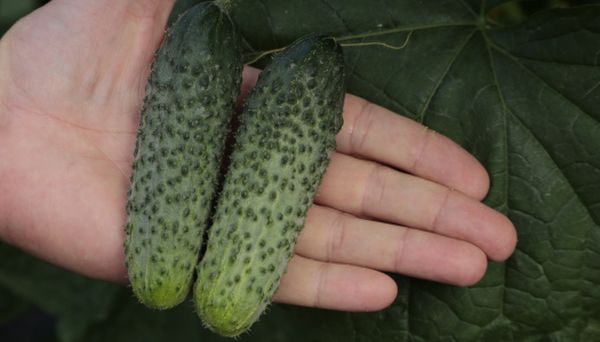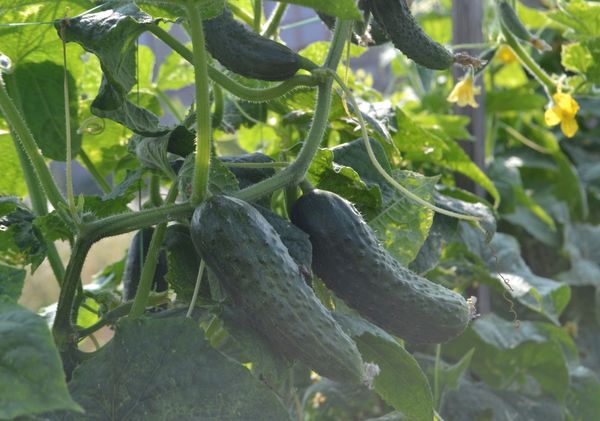When choosing cucumber seeds, many gardeners are guided by the characteristic of the variety, preferring hardy and not too demanding to care species. Such criteria corresponds Paratunka.
Table of contents
Description and characteristics of the variety Paratunka cucumbers
The cucumber hybrid ripens quite early at 40-43 day after the emergence of shoots harvest begins. The period of fruiting under favorable conditions and proper care lasts up tothe coldest.
The plant has a medium whip size with moderate branching. The leaves are colored in rich green. On one leaf sinus, 2-3 fruits of a cylindrical shape with a delicate skin are formed, on which yellowish strips are visible (one third of the length).
The length of the green leaves 7-10 cmweight is 80-100 gr. 12-16 kg can be removed from a square meter of beds. A feature of the variety is the lack of need for pollination of flowers.
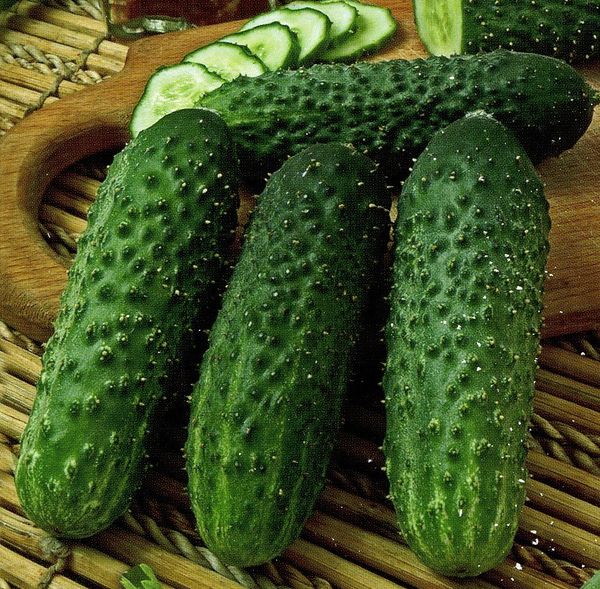
Variety Paratunka bred relatively recently - in 2006, the Moscow agrofirma Semko-Junior.
The advantages and disadvantages of the variety
The goal of the breeders was to get the plant. with strong immunity and a long fruiting period. The achieved results not only met the expectations, but also strengthened by other advantageous qualities of the Paratunka hybrid.
Main advantages:
- universality;
- pleasant taste with a sweetish note (no bitterness);
- resistance to various diseases and pests (bacteriosis, brown spot, powdery mildew, etc.);
- high yield;
- retains its presentation well during transportation;
- opportunity to grow in many regions of the country.
Variety Paratunka recommended for use in the following areas: Volga-Vyatka, Mid-Volga, North, North-West, North Caucasus, Central, Central Black Soil.
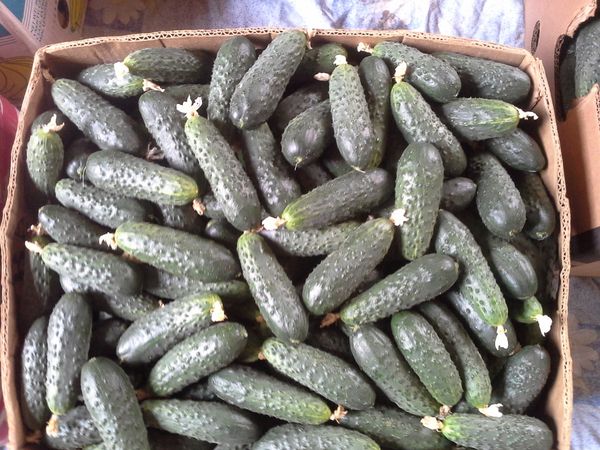
Disadvantages hybrid practically does not have, Is that the high price of seed and too sharp thorns on the skins of the fruit.
Requirements for soil for planting
Cucumbers are grown on any type of soil, but a high yield will be obtained on fertile lungs (loams, sandy loams) that have neutral or subacid environment.
On clay soils, access of moisture and nutrients to the plant is difficult, so they are recommended to be diluted with sand, peat and humus (the mixture is made up of equal proportions of the components). To reduce the acidity can be the introduction of dolomite flour (tuff, crushed limestone) during the autumn digging.
Cucumbers pull nutrients from the ground, so fertilizer injections are an integral part of crop care.

Soil preparation for sowing need to start in the fall. Fresh manure is added to the planned beds, after which the earth is dug up. Over the winter mullein decay, improve soil structure, enrich it with valuable trace elements (nitrogen, potassium, calcium, phosphorus, etc.). The amount of manure per 1 m2 depends on the degree of fertility of the soil, an average of 6-9 kg / m2 is used.
If the autumn work on the preparation of the soil was not carried out, it can be done in the spring 30-50 days before sowing the seeds. Immediately before landing it is recommended to enter humus (4 kg / m2).
In addition to organic mineral fertilizers are used:
- superphosphate (40 g. per 1 m2);
- ammonium nitrate (15 g. per 1 m2);
- potassium salt (25 g. per 1 m2);
- wood ash (200 g. per 1 m2).
Make them necessary for spring digging the earth, deepening on 20-30 cm. It is at this depth that the root system of cucumbers develops.
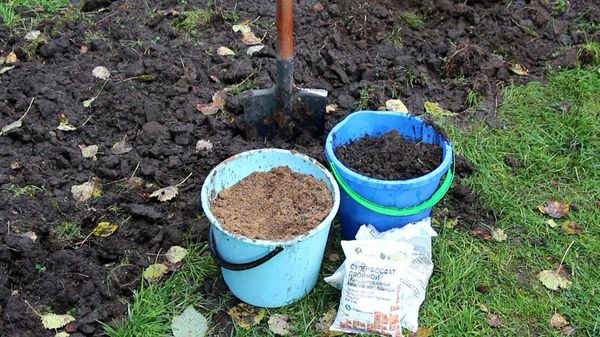
Sowing rules
Gardeners use two ways of seeding:
- in open ground;
- for seedlings.
Planting starts more often. in the middle of May, but gardeners are no longer guided by the timing, but by the weather.
The active growth of the plant begins when the air temperature is stable. 22-24 degreesan indicator on soils should be not less than 14-15 degrees.
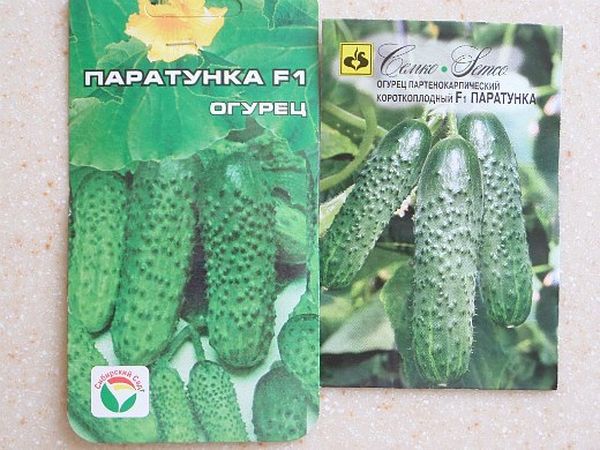
When planting in rows The following hole pattern is used:
- spacing between the bushes - 15-18 cm;
- distance between rows - 60-70 cm;
- hole depth - 3 cm.
At nesting method of seeding is used scheme: 50 x 30 cm.
To get a harvest earlier and to protect the shoots from spring frosts, seeds are sown. in separate containers (small pots, cups) in greenhouse conditions or indoors.
This technology provides the following important points:
- seeds are planted on seedlings per month before transferring seedlings to open ground;
- the soil for the cups is used light (before use it shoulddisinfect and warm up);
- seeds must first be soaked and heated (this procedure is not required for hybrids);
- it is necessary to dig grains into the soil by 1.5-2 cm;
- before the emergence of shoots surface tanks should be covered with glass or film;
- watering requires regular, but moderate;
- after the appearance of young shoots, the temperature drops, and 2 weeks before transferring to the beds, the seedlings are hardened (containers need to be taken out on the street for 2-3 hours).
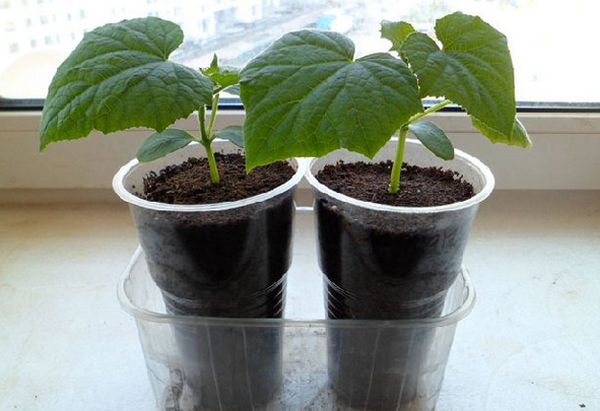
Care
Variety Paratunka refers to unpretentious, but elemental care plants are still needed.
Watering
Irrigation is recommended every 3-5 days with warm water, in hot weather, watering is carried out daily. It should be monitored so that the soil is moistened 20-25 cm deep. To prevent moisture stagnation, it is recommended to use sprinkling, drip irrigation system.
Weeding and Loosening
To ensure oxygen access to the root system, soil is periodically loosened. This process combined with weeding, since the neighborhood with weeds provokes root rot, the accumulation of insect pests in dense thickets. During the growing season, 4-6 treatments are performed.
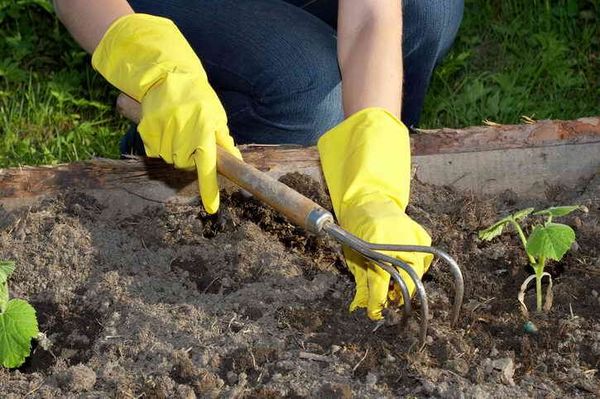
Catching cucumbers
First after the formation of sprouting, 2-3 leaves are added. Of the mineral substances, a mixture of urea (15 g.), Potassium sulfate (15 g.) And superphosphate (50g.) Is more commonly used. You can also dilute a mullein in water (1 l thick solution per bucket of water) or bird droppings (1.5 cups per bucket of water).
The second bait, rich in nitrogen-potassium substances, is introduced at the initial stage of fruiting, the third - in mid-July.
Care errors
Inexperienced gardeners often make mistakes that reduce yields:
- ignoring fertilizer application;
- wrong choice of place for beds;
- too early seed sowing;
- violation of watering;
- tightening the treatment when it detects damage to the plants.
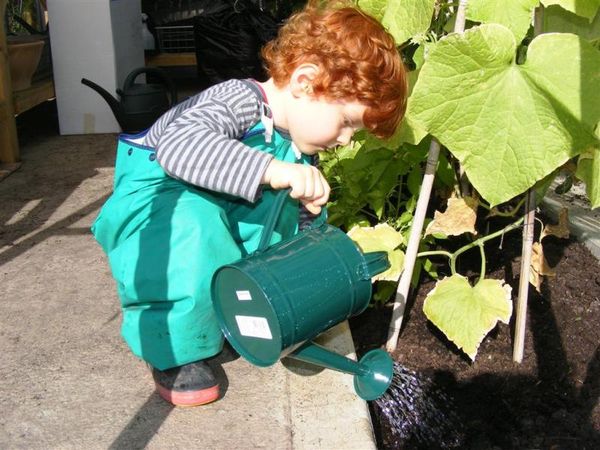
Diseases and their prevention
The main enemies of Cucumber Paratunka are:
- root rot;
- anthracnose;
- perinospora;
- white rot;
- aphid;
- spider mite
At the first signs of plant damage, it is necessary to treat and remove diseased bushes from the garden to prevent the spread of the disease.
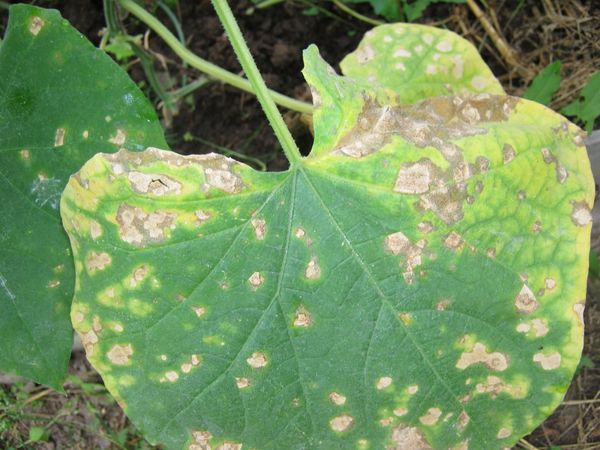
The most effective way to avoid problems is considered timely prevention, which consists of the following activities:
- compliance with the landing intervals (to avoid thickening);
- soil moisture control;
- daily inspection of plants;
- weeding and loosening the soil;
- disinfection of seeds and the area under the beds.
Harvesting and storage rules
To the fruit does not outgrow, it is recommended to collect 1 time in 2 days. You can store the harvest for at least 10 days, if you put the boxes in the basement (temperature no more than +8 degrees). If the indicator exceeds +10 degrees, the shelf life is reduced to 4 days.
Hybrid Paratunka approved gardeners living in different parts of the country. It is interesting to grow, you can experiment with the cultivation in greenhouses, as did the bold innovators.
